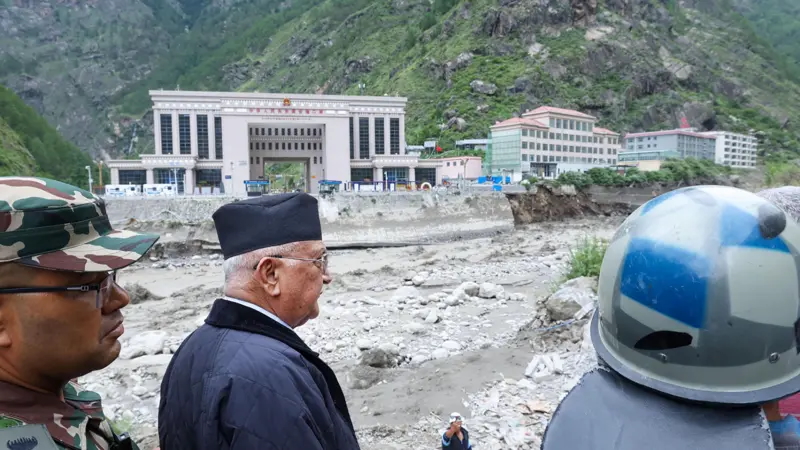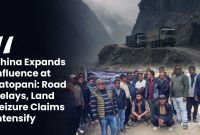How China’s Border Road Became Nepal’s Worst Flood Trap in History

Heavy rains may have triggered the devastating flood that struck Nepal’s northern border on July 8, but the real disaster lay in a half-built road and stalled infrastructure projects that turned a natural surge into a humanitarian crisis. In the predawn hours, torrents swept down the Lhendekhola—known locally as the Bhote Koshi—wiping out the Friendship Bridge at Rasuwagadhi, inundating the customs yard, and hurling dozens of vehicles into the Narayani River. At least nine people have been confirmed dead and more than twenty remain missing, many feared trapped beneath uprooted asphalt and twisted steel.
The calamity exposed a glaring vulnerability: Nepal’s reliance on Chinese-built highways that hover unfinished above steep Himalayan valleys. Beijing committed to constructing the Syaphrubeshi–Timure road five years ago, promising a lifeline to remote mountain communities and a strategic corridor for the Belt and Road Initiative. Yet frequent landslides, soil erosion, and minor flash floods kept swallowing sections of the route, forcing Nepali contractors into endless repairs and costly design changes. Officials lament that what should have been a straightforward engineering job became a gamble with every monsoon.
“I’ve lived here my whole life, and I’ve never seen water rise so fast,” said Devi Tamang, whose family home at the foot of the bridge is now a soggy ruin. “When the road collapsed, there was nowhere for the water to go but straight into our houses.” Tamang’s story is repeated across Rasuwagadhi, where peeling tarmac and half-erected retaining walls funneled the flood directly into shops and dormitories used by migrant workers and traders.
Behind the cordons of Nepal Army engineers and local police lie unanswered questions about accountability. Kathmandu’s Department of Roads admits it signed off on several design alterations demanded by the Chinese firm supervising the project, but preliminary reports suggest those changes failed to account for two decades of data showing repeated slope failures in the watershed. Meanwhile, Nepal’s Department of Hydrology and Meteorology had no real-time data-sharing agreement with China, leaving them blind to sudden rain-induced glacial lake releases upstream—an omission that cost rescuers precious hours.
Prime Minister Khadka Prasad Oli has ordered a joint inquiry, and Home Minister Ramesh Lekhak vowed to hold “all responsible parties” to account. But critics argue that unless Beijing’s contractors face tangible penalties, inquiry reports will amount to little more than political theater. “Nepal cannot afford another lesson learned the hard way,” said Dr. Rijan Koirala, a Kathmandu University hydrologist. “Investments in roads are meaningless if they collapse under the first sign of trouble.”
Border communities now face weeks without access to medical aid, clean water, or markets to sell their produce. Traders report losses exceeding NPR 500 million as customs operations ground to a halt. Even alternative routes over the Arniko Highway—already choked by landslides—remain perilous for heavy vehicles laden with fuel and relief supplies.
As floodwaters recede, the deeper flood of recrimination has begun. Local politicians accuse federal authorities of blind faith in Chinese engineering; opposition parties demand the government renegotiate project terms to include rigorous environmental safeguards. Farmers downstream worry that further earthworks could unleash fresh mudslides when next year’s monsoon arrives.
Nepal stands at a crossroads: continue its rapid infrastructure push under foreign supervision, hoping that design tweaks will prevent the next catastrophe, or pause to build technical capacity and enforce safety standards before signing another Belt and Road cheque. For Tamang and countless others whose lives were swept away, the choice is urgent. Only time will tell if Kathmandu’s leaders can engineer a more resilient future—or if the next deluge will drown hopes of progress once and for all.
Sharp Power



![From Kathmandu to the World: How Excel Students Are Winning Big [Admission Open]](https://nepalaaja.com/img/70194/medium/excel-college-info-eng-nep-2342.jpg)
